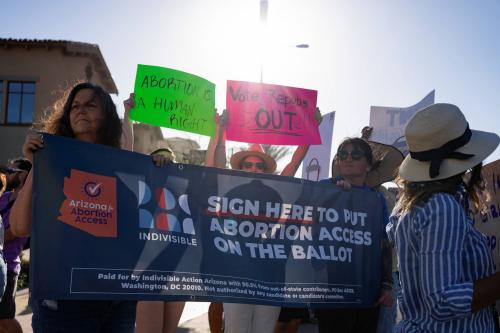The history of president Obama’s health reform bears an uncanny and disturbing similarity to the life cycle of a hurricane. With Sandy fresh in our memory, the similarity is not comforting.
Hurricanes have three phases. The front wall of the storm brings high winds, lightening, and rain. Next, at the hurricane’s center, or eye, the wind drops and the air warms. If one is at sea, the water may turn calm and warm, bringing the illusion that the storm has ended. As the storm moves on, wind and rain return, often with increased force. Those fooled by the calm who leave safe havens may be destroyed by what follows.
The life cycle of a hurricane will bear an eerie similarity to that of health reform. Nearly four years elapsed between president Obama’s initial call for national health reform until the bill became law and the Supreme Court ruled on its constitutionality. The political and legal turmoil was intense and continuous. The process was rancourous and the outcome in doubt from start to finish. It took a bitterly fought presidential election to put an end to this phase of the struggle.
Now, we are in a period of relative calm. The 2012 election settled the immediate fate of the Affordable Care Act (ACA). The candidate who swore to repeal it lost. The ACA was the major domestic legislative achievement of the victorious incumbent president who won reelection. Now, eighteen states are in process of designing rules for health insurance exchanges—the administrative entities that will manage implementation of the new law, the most important provisions of which will take effect one year hence. The other states will either leave implementation entirely to the federal government or share administrative responsibilities with federal agencies.
A huge amount of work remains to be done by October 1, 2013 when people can begin enrolling for insurance coverage in the new exchanges.
• Data systems have to be developed.
• Software must be written and computers purchased to permit on-line enrollment or assist officials in signing people up in hundreds, if not thousands, of offices.
• State insurance regulations need to be conformed to the new national law. Insurance companies must design the plans they will offer through the exchanges and, in most states, the separate products that they will offer outside the exchanges.
• Small businesses will have to decide what plans to offer their employees. Individuals and employees of those businesses need to be informed of the options they face and decide what products to buy.
• The state insurance exchanges or their federal equivalent will have to enroll people, compute the subsidy to which each person is entitled, and pay that subsidy to the insurer that each person has selected.
• Myriad other activities are going on in many federal government offices and to a greater or lesser extent–or not at all–in state government agencies.
By its very nature, these activities are decentralized and dull. No exchange, other than two that existed before enactment of the Affordable Care Act, has yet opened its doors or will before late 2013. No one is yet applying to them for insurance coverage or for subsidies. A hive of activity is ongoing in state and federal agencies, but no one is fully aware of everything that is going on. More importantly, perhaps, no one is aware of what activities that should be but are not going on. Like those in the eye of a hurricane, a deceptive and short-lived calm is upon us.
The storm will gather force once again starting on October 1, 2013. That is when millions of people will start applying for coverage through the newly created health insurance exchanges. Exactly how many will apply will depend on the rules that the 18 states setting up their own exchanges and the federal government adopt. The full fury of the storm will return on January 1, 2014. Nothing approaching the complexity of this ‘roll out’ has ever taken place in U.S. peacetime history.
To appreciate what is involved, consider the complexity of the law.
• People will be eligible for coverage in one of the following ways: 1) through Medicaid, if their income is below 138 percent of the federal poverty level (FPL) in those states that choose to extend Medicaid coverage as permitted under the ACA, but only those with incomes up to 100 percent of FPL will be covered in those states that do not extend coverage; 2) through a ‘basic health plan’ if their income is between the Medicaid level and 200 percent of the FPL in those states that adopt such a plan (but the federal regulations for such plans have not yet been released); 3) through ordinary insurance if they are not covered by Medicaid or a basic health plan, with subsidies provided through the exchange if their income is less than 400 percent of the FPL and without subsidies if their incomes are above 400 percent of the FPL.
• People within the same family may be eligible for coverage under two or more categories of coverage.
• Each exchange will offer insurance at a minimum of four levels of generosity. People under age 30 will have a fifth option, a special bare-bones class of insurance to keep costs down.
• The subsidy payable to an individual depends both on his or her own income and on the coverage categories of other family members.
• Coverage and subsidy amounts can change if income changes—for example, if the person or some other family member changes employment status—or if family structure changes.
• Premium subsidy amounts, based on current income or income expected over some future period are paid directly to the particular insurer that the enrollee selects. If those payments turn out to be excessive—for example, because income rose after application, the individual must repay the overage, up to legislatively specified maximums based on income.
• Families residing in metropolitan areas that span state borders, such as New York, Washington DC, Kansas City, or St. Louis, may have family members working in different states and, hence, come under different exchange rules.
• The federal government must provide earnings data for people, many of whom do not and will not file tax returns that are sufficiently accurate and current to enable the health exchanges to compute the correct subsidies for applicants. Tax returns and Social Security earnings records won’t do, as they are available now only with delays of months or even years.
• Individuals will be required to carry insurance of one sort or another that meets standards under the law and may have other features required by the state exchanges. They are subject to a fine if they fail to do so, but there is no effective enforcement mechanism other than failure to return tax refunds due people who had more tax withheld than they end up owing. The requirement is waived altogether if premiums exceed more than certain proportions of income.
This is just a partial list of the more visible administrative challenges that have to be met. Confronting this list, one could either feel optimistic or lapse into despair. Optimists regarding prospects for implementation will recall the comparatively trouble-free introductions of two other even larger federal programs—Social Security and Medicare. These programs differed in essential and administratively-relevant ways from the Affordable Care Act. Both entailed relatively simple eligibility criteria—age or disability and requisite work experience over many years. Under both programs, workers and their employers were required simply to pay a tax proportional to covered earnings. Social Security beneficiaries initially had nothing to do other than cash the checks they receive each month. Administration of Medicare is somewhat more complex and subject to error and fraud. Even so, the challenges under the ACA associated with enrolling people, determining subsidies, paying them to the right companies, and adjusting subsidies as circumstances change are vastly more complicated.
Pessimists might conclude that implementation will inevitably break down or go through an error-prone period of administrative over-load so long and politically fraught that program collapse is likely. In contrast to the redundancy built into such complex enterprises as the space program—where, if one system fails, one, two, or even three back-up systems are built in to keep things working—health reform is replete with elements each of which is vital to success, such that if any one fails, the whole system could ‘seize up’ and fail. Determining eligibility, keeping track of which type of insurance applies to which family members, computing subsidies, and making sure that premiums go to the right insurers will be a never-ending headache.
In my view, neither the optimistic nor the pessimistic view is fully justified, although the pessimists have the better case, at least at the outset. The mixed-public-private insurance system perpetuated in the ACA is inherently complex. But, with time, bugs in the software will be ironed out and initially overloaded and imperfect data systems will be steadily improved. Among the 18 states setting up exchanges, a few are bound to get the job mostly done and show the way for other states. In brief, with time, most administrative problems can be overcome. The major challenge will be to make sure that the system works in enough places and fast enough to permit supporters to point to the successes and explain that the inevitable glitches are reparable. It is also worth noting that were Congress not neck deep in a swamp of partisanship legislators could find ways to minimize the problems that remain.
The actual course of events after January 1, 2014 is likely to be stormy and filled with developments investigative reporters will enthusiastically describe and ACA opponents will point to with relish. There is every prospect that during the years 2014 and 2015 the political storms will be as furious as they were when a committed president and Democratic Congressional leadership gave life to the long-delayed dream of national health reform. Those who said that the presidential election would settle the fate of heath reform will be proven mostly right. But it will become clear that they had the date wrong: the key election will turn out to have been not 2012, but 2016.



Commentary
Health Reform: The Political Storms are Far From Over
December 27, 2012